I never thought that a small hobby would turn into such passion that it would lead me to the base of the top of the world. I knew mountains were my go-to place whenever I feel stuck in life. But these giants were scary. I was feeling like an ant lost in a freezer full of ice. I was at the highest altitude where a person can go without actually climbing Everest and this is my version of Everest Base Camp trek.
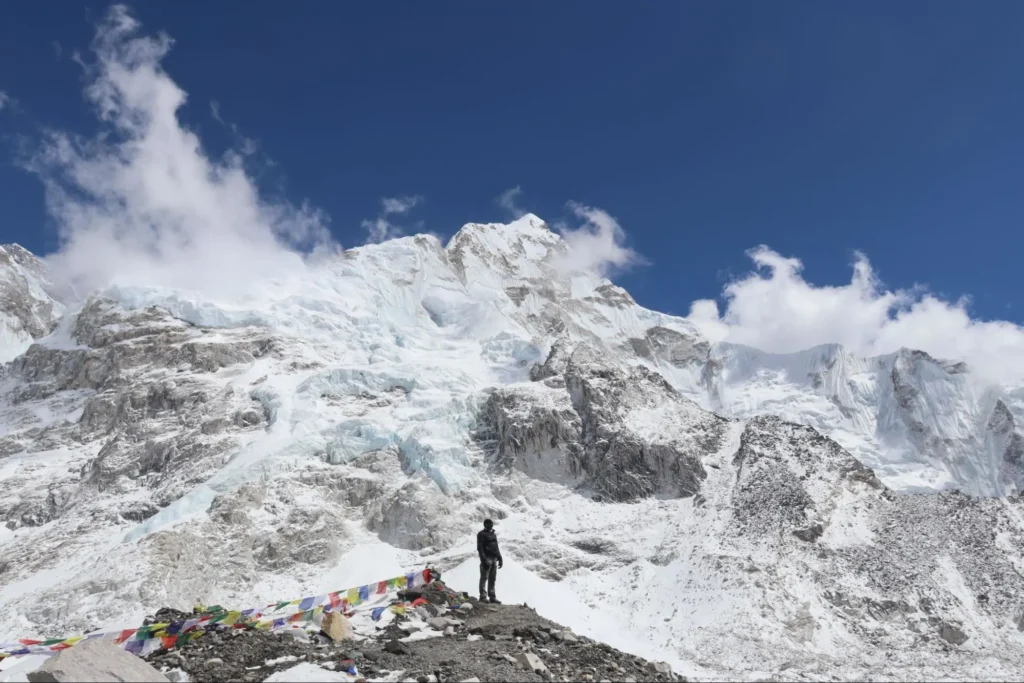
It all started from Triund in 2018 when I did my first ever solo exploration trek. It took me five years and a number of treks to finally attempt the Everest Base Camp trek. I started planning it in 2021 and it finally happened in 2023. It tested me from head to toe physically, emotionally and financially but when I was standing on Kala Pathar (18,000ft), it made me realise that I would do it all over again just to be there at any point of life. It is truly said that there is only one Everest on Earth and that journey is also one of a kind.
December 2021- Ten months before the Attempt
I was in the last year of graduation and I knew that once I start my job, I wouldn’t be able to spare enough time to do EBC. The trek could be completed only in Spring or Autumn seasons but I could only opt for Autumn because I had job placements in Spring. I had completed a dozen treks in India with the highest altitude going up to 15,000 ft. The plan was to complete EBC in DIY style so that it is affordable and I could complete it at my own pace.
Unfortunately, the Nepal Tourism board had made it mandatory to take a guide or a porter on all the treks in Nepal which come under National parks. The Everest Base Camp trek comes in the region of Sagarmatha National Park. Thus the DIY style option was no longer possible. I contacted a local tour company in Nepal and arranged my bookings accordingly. The departure to Kathmandu was in the last week of September of 2021. I had almost nine months to prepare. The preparation included weight training, running marathons and yoga.
Nine months later, I was in the best shape of my life and all ready for the journey. The monsoons were not over and I started being paranoid. Eventually I packed my bag and took the flight from Delhi to Kathmandu. I explored Kathmandu for a day and the next morning, I had my flight to Lukla. I reached the domestic airport at 5am and I was shocked to see the amount of trekkers at the airport.
The flights were impacted by the harsh weather and thus all the travellers were stuck there. I waited for two more days but still there was no flight operating to Lukla. The third day, I decided to fly back to Delhi. There were no flight operations from the last six days and there was no hope for the next four days. The journey by road was also not possible as there were numerous landslides blocking the highway. It was a major heartbreak because I had invested so much for this. The first attempt was a failure and I returned back to Delhi the next day.
January 2023 – Fifteen months later….
The second wave of Corona Virus just got over and I was still wondering if my EBC dream would ever come true. I got a call from my friend asking about the details of EBC as he was planning it too. I had a sudden boost of motivation and set up a meeting with him. After two hours of long discussion and planning, we booked the flight tickets to Kathmandu for the coming spring season. I had almost two months to prepare my body physically and mentally.
March 2023 – The second attempt
We flew from Delhi and landed in Kathmandu. I was familiar with it but I had company this time. We explored the city for a day and spent the night at the hotel. We met the team at dinner and we were the youngest amongst them. We were the only members who opted to carry the rucksacks themselves. It meant carrying a 20kg load on your shoulders for the next 12 days covering around 130 kilometers. The highest altitude will go up to almost 18,000ft. We love to torture our bodies. Post the bonding session, we went off to bed. I was very nervous for the next day as I had a disappointing past attached to it.
Day 1: Kathmandu – Lukla – Phakding
We woke up at 4 am and got fresh. We packed up and left for the airport an hour later. The same airport, the same queue of trekkers with rucksacks. But the different thing was that flights were operating this time. We got past the security check and I could not express my happiness at that time. Little did I know that our aircraft was a very small Twin Otter plane which could carry only 20 passengers at a time. Our destination was Lukla (2,845m). The Tenzing-Hillary airport in Lukla was considered to be the most dangerous airport in the world. The runway is only 500 m long and has an 11.7% gradient. There is only a single attempt possible for landing and takeoff.
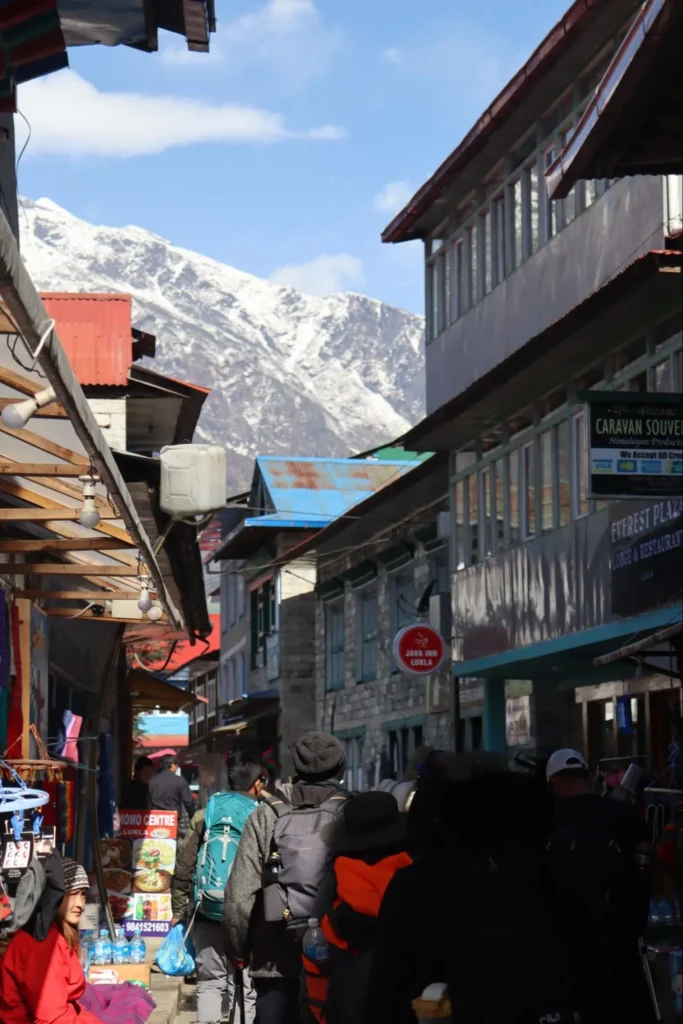
The flight from Kathmandu to Lukla was 45 minutes long but it had the most amazing views I ever had on any flight till date. The weather was clear and we had a safe landing in Lukla.
Our team had 12 members and we met our guide and porter in Lukla. We had breakfast in a hotel and he briefed us for the coming days. There was no road connectivity from there and we had to trek from Lukla to EBC in the coming days. Our destination for the day was Phakding (2610m).
We entered the Lukla market and were surprised to see the facilities present at such altitude. We crossed the main market area and reached a checkpoint. Our guide did the permit checkups and we moved on towards Phakding.
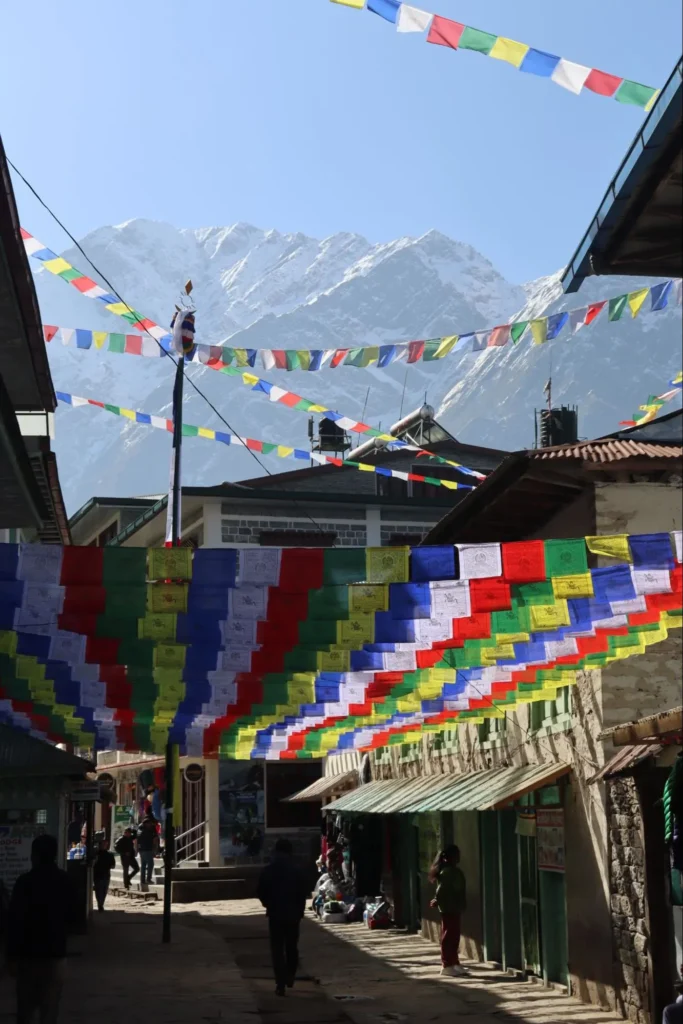
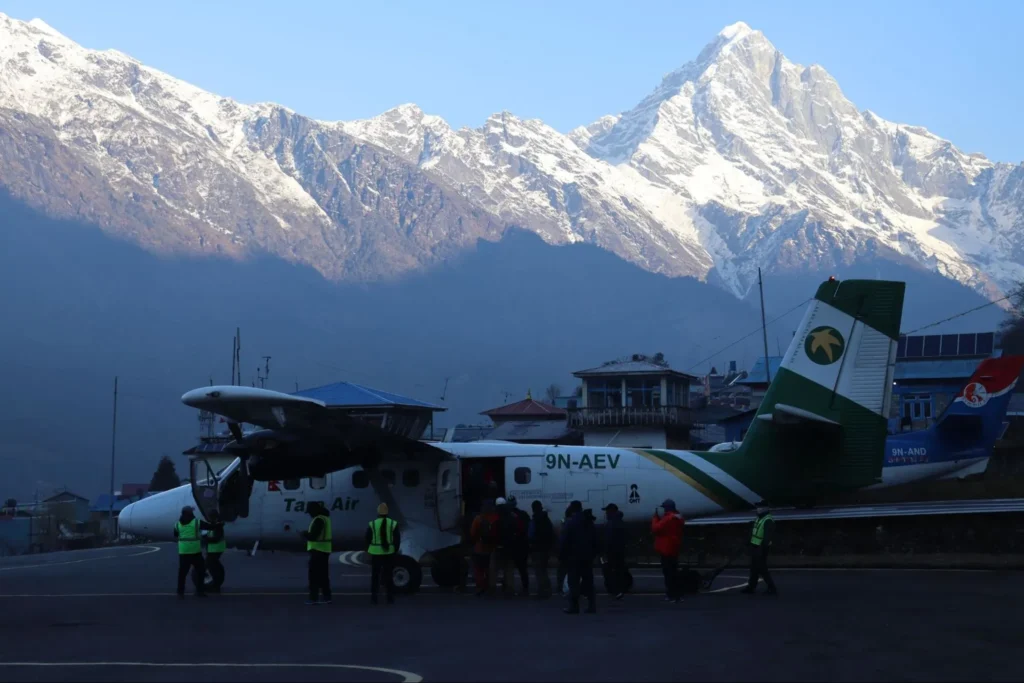
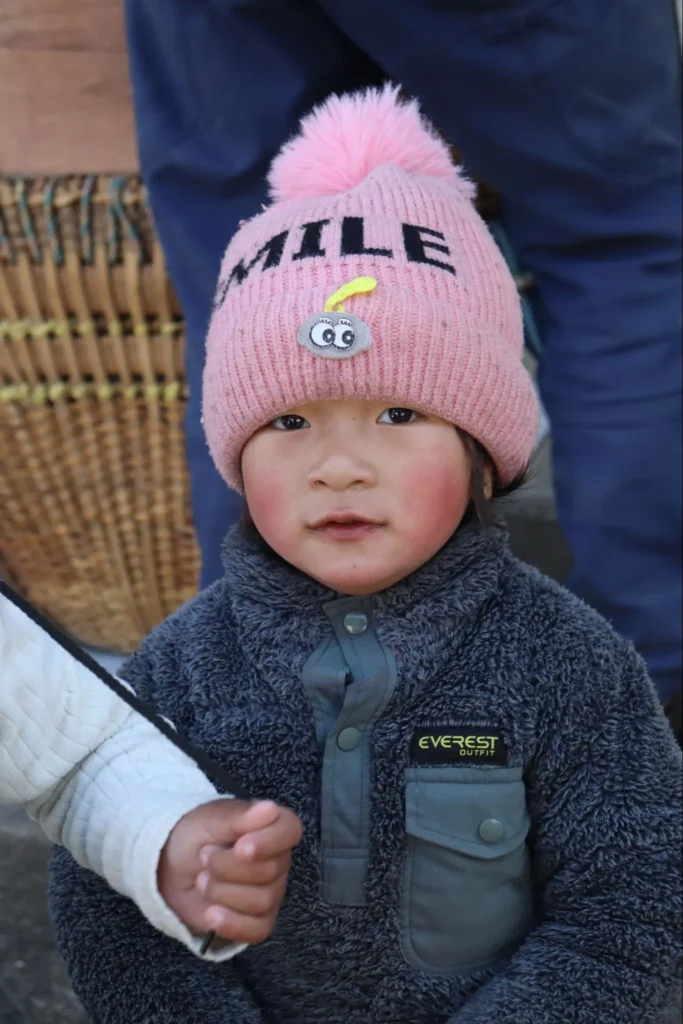
The distance from Lukla to Phakding was 9 kilometers. The trail was flat and gradual and ascent and descent. The Dudhkoshi river met us along the way. There are a lot of Tibetan Temple bells and engraved big rocks with prayers. The trail was full of small Stupas after every few meters. The atmosphere was super clean and the Nepalis were very welcoming. We reached Phakding by afternoon and had lunch in our homestay.
There were tea houses to homestays to hotels on this trek so camping was not necessary. We checked into our homestay. We got a room with two single beds coupled with blankets and a charging point. We ordered Dal Bhat (Lentils and rice) for 500 Nepali rupees and then moved out to sit by the river till evening. The temperatures were mild in the day but it got cold after sunset. We have to move to Namche Bazaar tomorrow.
Day 2: Phakding – Namche Bazaar
The next day we woke up at 7 am and got ready before 8 am. Breakfast time was usually 8:30 am and we used to start the trek before 9 am on all days. It was a clear morning and we had pancakes with maple syrup to keep it light. We crossed multiple hanging bridges till we reached the checkpoint and official entrance of Sagarmatha National Park in Monjo. We got the second permit and now the next destination would be Namche Bazaar (3,440m).

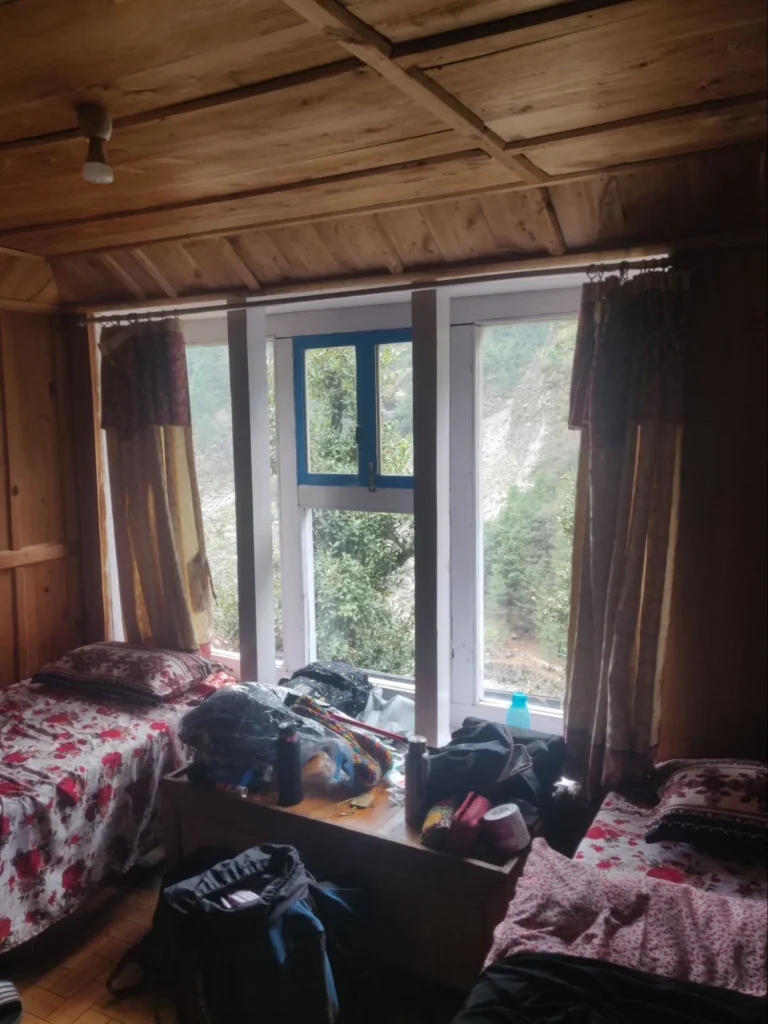
Another kilometer passed, descending and we reached the water level. In front of us stood the Edmund Hillary suspension bridge (the highest suspension bridge in Nepal). We crossed the 60m long, 135m high bridge in full windy conditions. The winds were so harsh and the bridge was swinging and maintaining balance was tricky. Phakding to Namche Bazaar is a 10 km trek with an altitude gain of almost 2,700 ft. After crossing the Hillary bridge, the trail was a steep climb till Namche.
We started getting hints of Namche Bazaar, a kilometer before the actual arrival. The last turn I took towards Namche, I stood there with my mouth wide open after realising the vastness of it. I was shocked to see the amount of civilization it had in such living conditions. It was not less than a humanitarian feat to have those luxuries and a proper working city at such an altitude.
Day 3: Acclimatization In Namche Bazaar
We were so overwhelmed by the hospitality in Namche Bazaar that we slept like babies at night. The next morning we woke up and looked out of our room windows, Namche was covered in a blanket of snow. Thankfully, we had to acclimatize that day. The plan was to complete breakfast and go for the hike to the Everest View Hotel. Stay there for sometime and return back till lunch. It was necessary because we had to gain altitude regularly in the coming couple of days. Trust me when I say this: I had never seen more helicopters flying on any other trek till date. Helicopters were flying as if they were taxis. It was probably because we went in the climbing season.
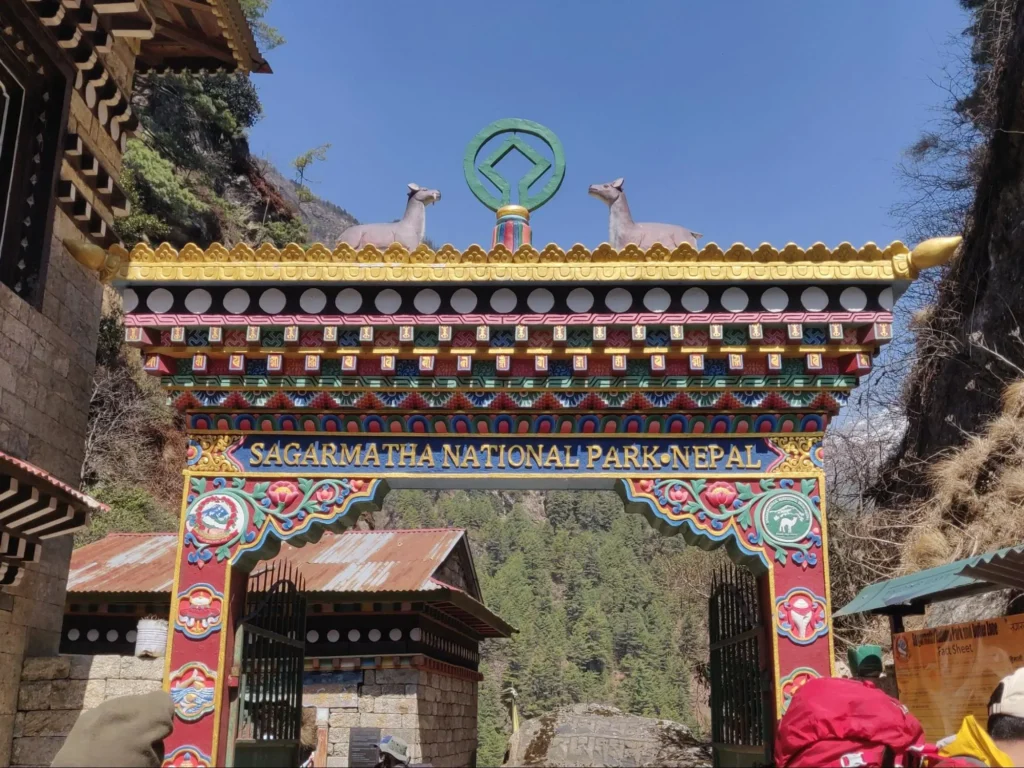
We completed our breakfast and moved out for the hike. Our shoes stomped the snow underneath and we took the detour from the classic route towards the famous Everest View Hotel. It was famous because of its location and you could spot the first glimpse of Everest from there. We reached there in 1.5 hours and gained roughly 500m elevation. We could see Ama Dablam, Nuptse, Lhotse and Everest right in front of us. On the right side, Mt. Thamserku was standing in its full glory.
We spent the rest of the day exploring the market of Namche Bazaar. It had all the equipment needed for trekking and mountaineering. There were restaurants and pubs where you could have a drink. There was a volleyball court where the sherpas and local boys were having a fierce game. We had time to go to the local Namche museum and it was also very aesthetic.
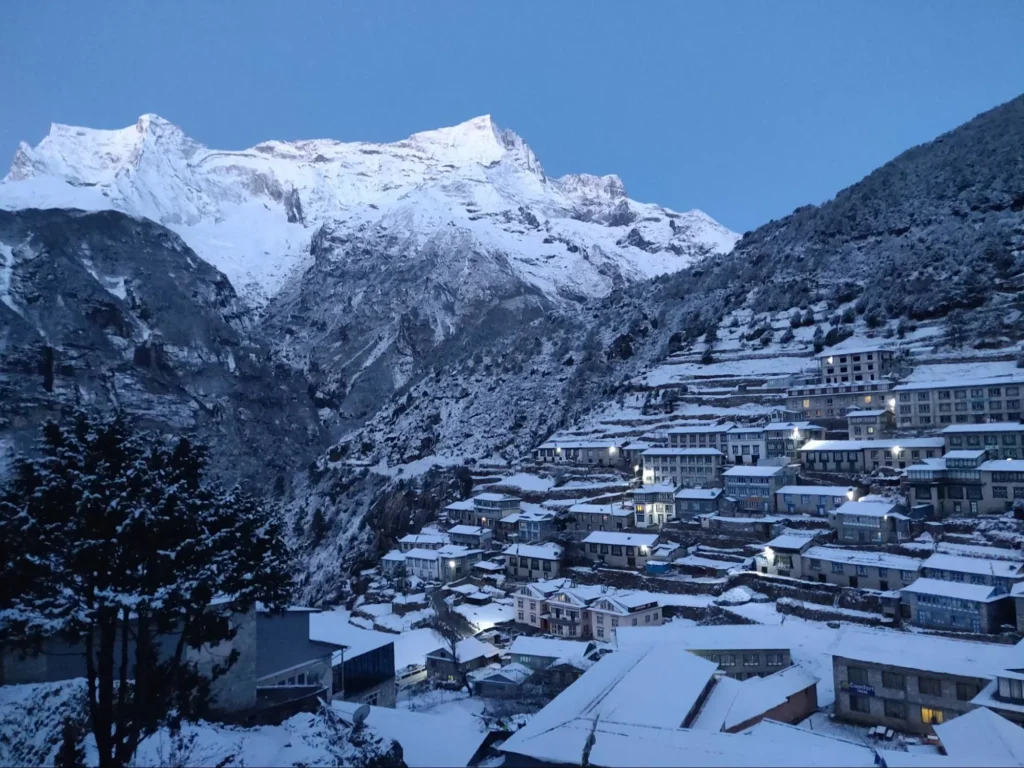
We interacted with the school children of Namche and experienced true innocence. The day was very relaxing and we rested enough to gain our energies back. Some people were experiencing headaches but it was normal and everyone sat together on dinner. The guide briefed us for the trek coming up and then we made it to bed after 9 pm. It used to get super cold post the sunset.
Day 4: Namche Bazaar to Deboche
The next day, we woke up and had breakfast by 8 am. After the briefing, the destination decided for the day was Deboche (38,20m). The distance was almost 10km with an elevation gain of 400m. The intermediate station of Sanasa marked the diversion to the Gokyo Lake trail. It marks the route of the three passes trek which leads to Everest Base Camp. The trail was a series of sharp descents after Sanasa and then a long steep ascent till Tengboche. Tengboche is famous for the monastery and views. It is almost a hilltop and the shape of Ama Dablam opens up from here. We went into the monastery and explored Tibetan culture for some time.
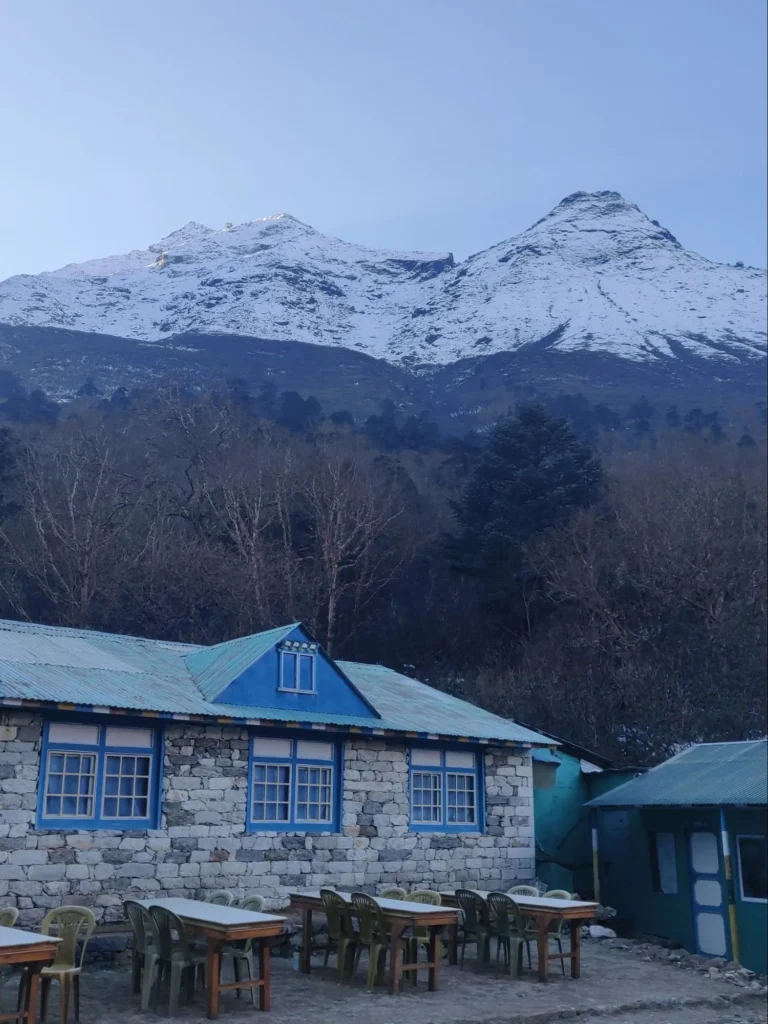
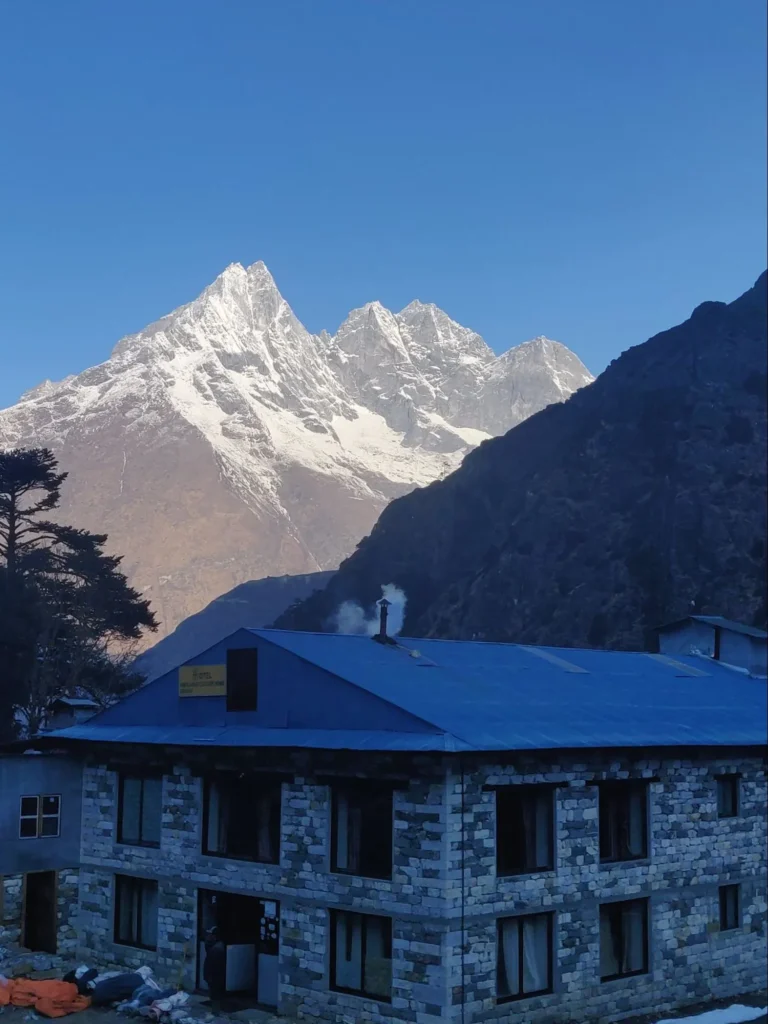
Deboche was just a kilometer of flat walk from here but that was the toughest part for the journey according to me. The trail was full of mud and black ice. There was a long queue of trekkers and yaks who were slipping on the black ice. It was a gradual slope and if you fell, you could slip down the trail into the sharp bushes. We somehow managed to pass the section and reach our lodge for the night. We rested in our rooms for a bit and then planned to shoot the night sky. We came out at 12 am only to find that the sky was cloudy and we were sure we would get snowfall the next day.
Day 5: Deboche to Dingoche
The nights were getting colder as we were moving upwards. Day 5 began with a good breakfast and I was craving a hot shower. But it was costing me 600NPR for a shower and I could’ve had an extra meal of the same amount. Today we had to move to Dingboche (4,410m). The distance was 9km from Deboche via Pangboche. We finished our breakfast and started our trek at 9:00 am. The weather was sunny for the first few hours of the day and the starting trail was flat till the suspension bridge on the Imja River. That marked the beginning of the ascent.
The weather changed from sunny to cloudy till we reached Pangboche. We were above the treeline and the greenery had vanished. We continued our journey and reached Shomare. After walking for a couple of kilometers, there came a diversion point.

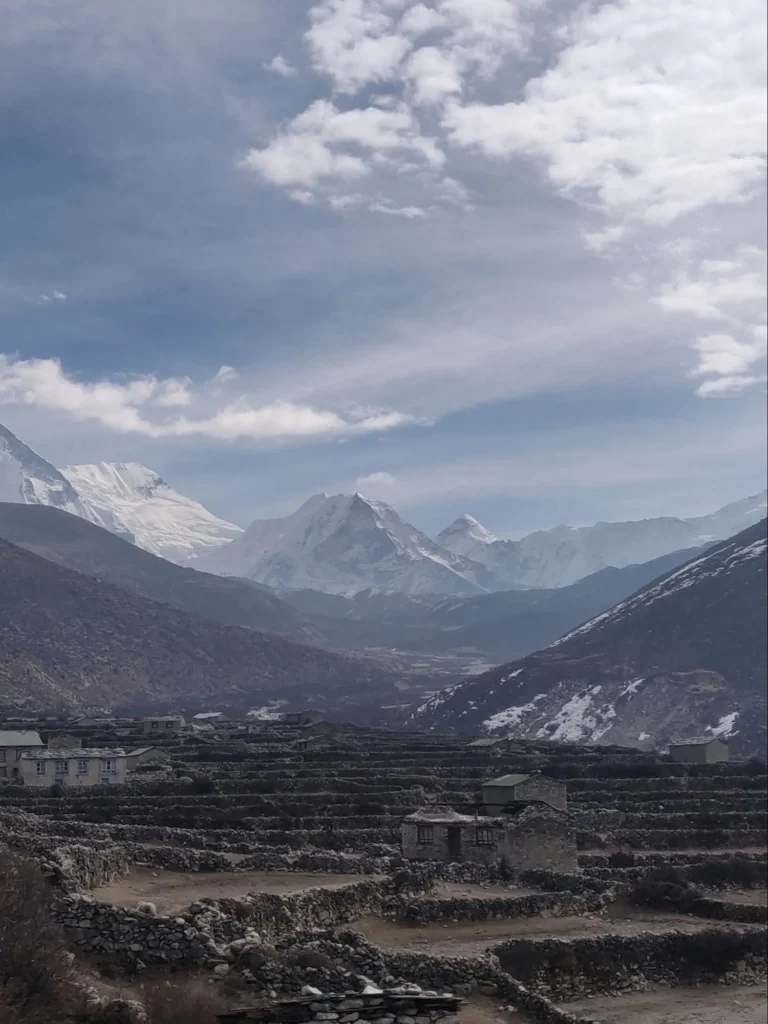
One way led to Pheriche and the other to a right turn towards Dingboche. We took the right turn to see the climb ahead of us. It was the last ascent of the day but was quite steep and long. The weather was also not very supportive. It could snow any moment and we could not rest much because of it. We were just a kilometer away from Dingboche and one of our team members was too exhausted. She was feeling the altitude hitting her but it was so windy at that time that resting was not an option. I pushed her for the last kilometer till we reached our lodge.
Day 6: Acclimatization in Dingboche
Today as an acclimatization hike, we were aiming to climb the Nagarajuna Peak(5000m). We had a slow start and got ready by 9:00 am. We started our hike and reached an altitude of 4850m. We wanted to hike further but the clouds had already been formed, signalling us to descend back. The viewpoint offered amazing 270 degree views. The Island Peak, Makalu, Lhotse, Ama Dablam, Cho Polu, Taboche, Arakamtse, Lobuche etc were all visible very clearly.

We descended back just in time and shortly after, it began to snow. Dingboche turned all white till the evening. We stepped out to explore the area and found one of the highest cafes in the world. We also had a snack break with the sherpas in a small tea shop.
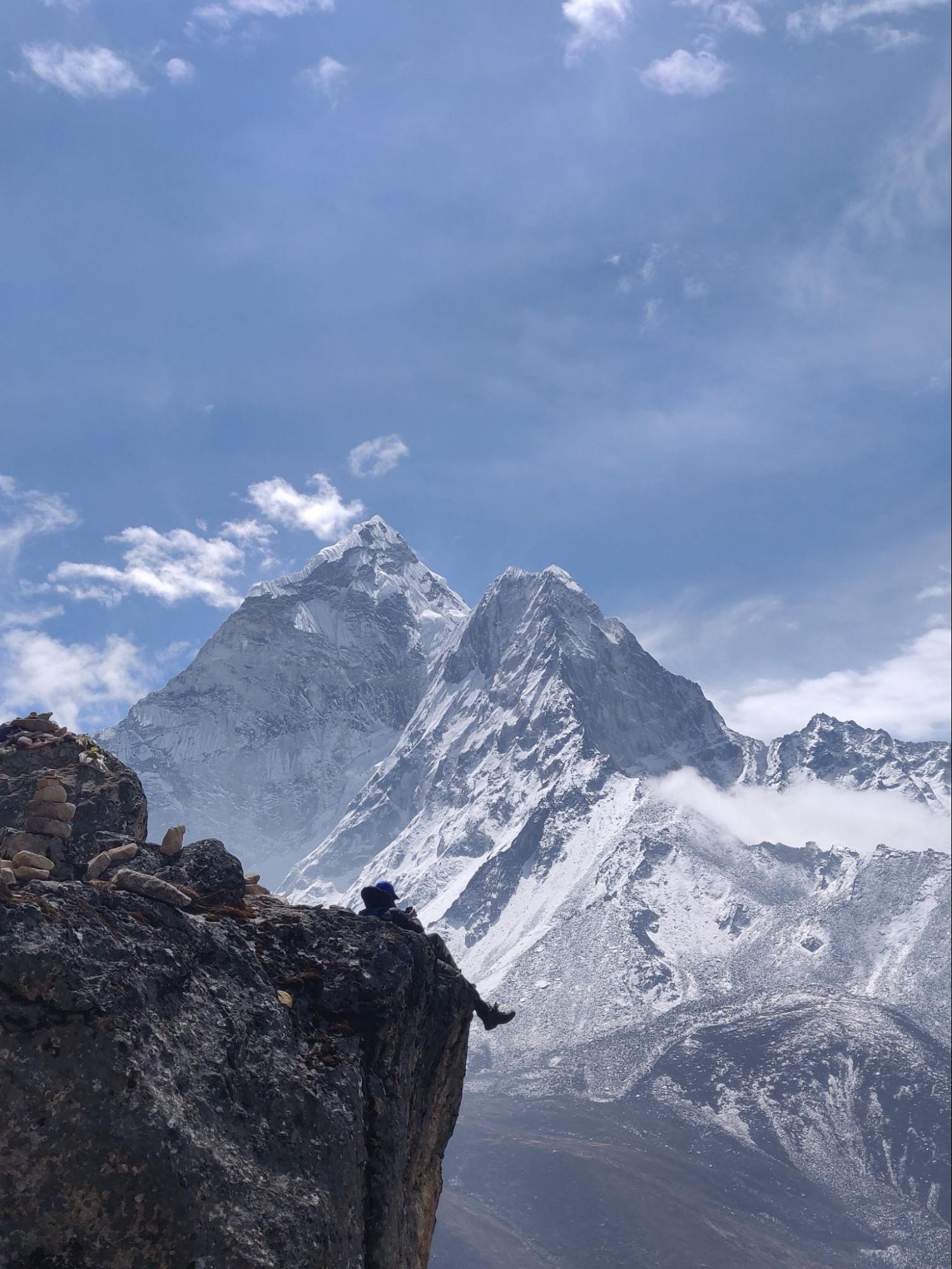
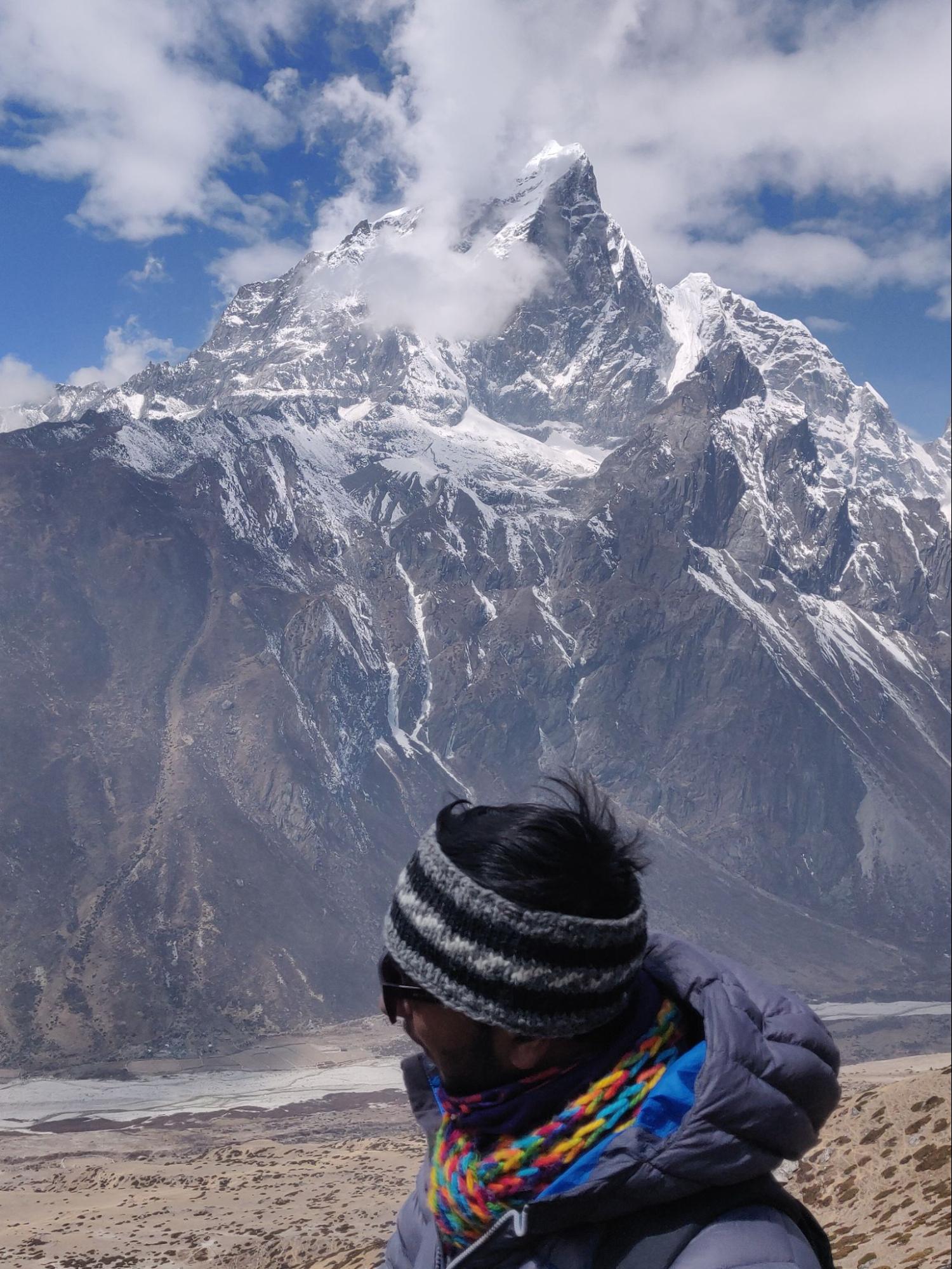
Day 7: Dingboche to Lobuche
We woke up in the morning to find out that everything was frozen and covered in white. The water in the taps as well as the stored drum water was also frozen. We got fresh using kitchen water and finally started our trek in the snow around 9am. The landscape which we saw a day before was all covered in a layer of snow. We continued to trek along a flat trail followed by a boulder section to reach Thukla. On this way, we could spot Pheriche down the valley which was all white.
We had a pit stop in Thukla for lunch and the guide showed us the trail ahead. It was a steep climb to Thukla Pass. Thukla Pass is famous for the memorial ground of the climbers who passed away while climbing 8000m peaks. We continued our journey and climbed on top of the pass. We spent some time at the pass and paid our respects to the climbers.
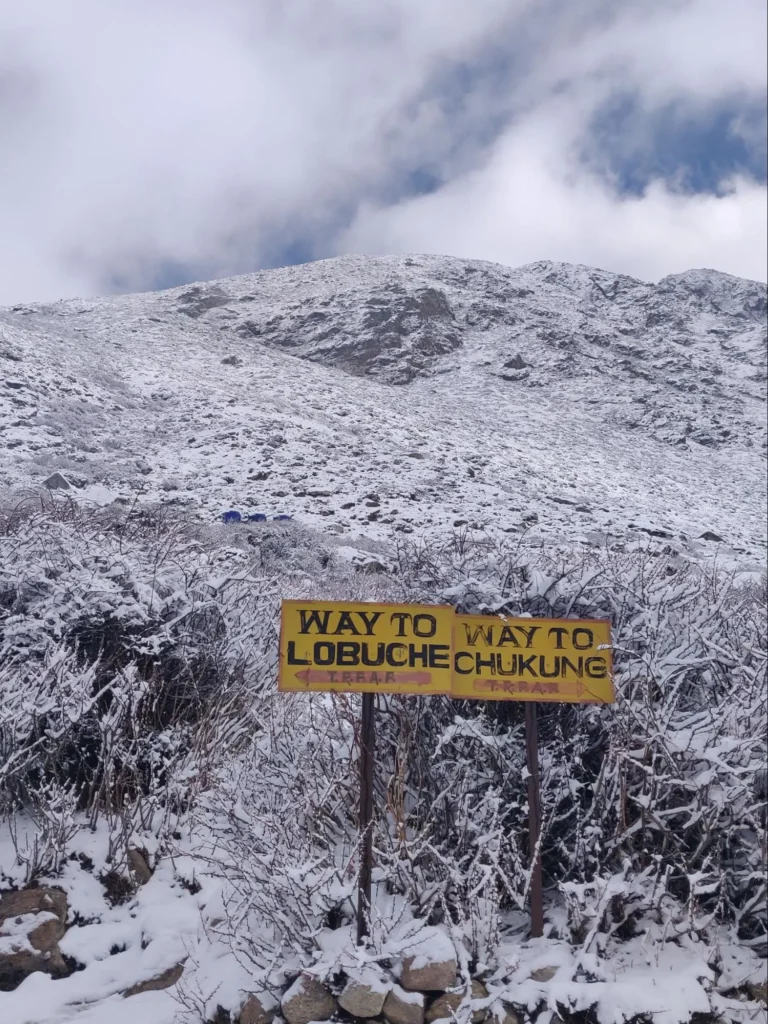

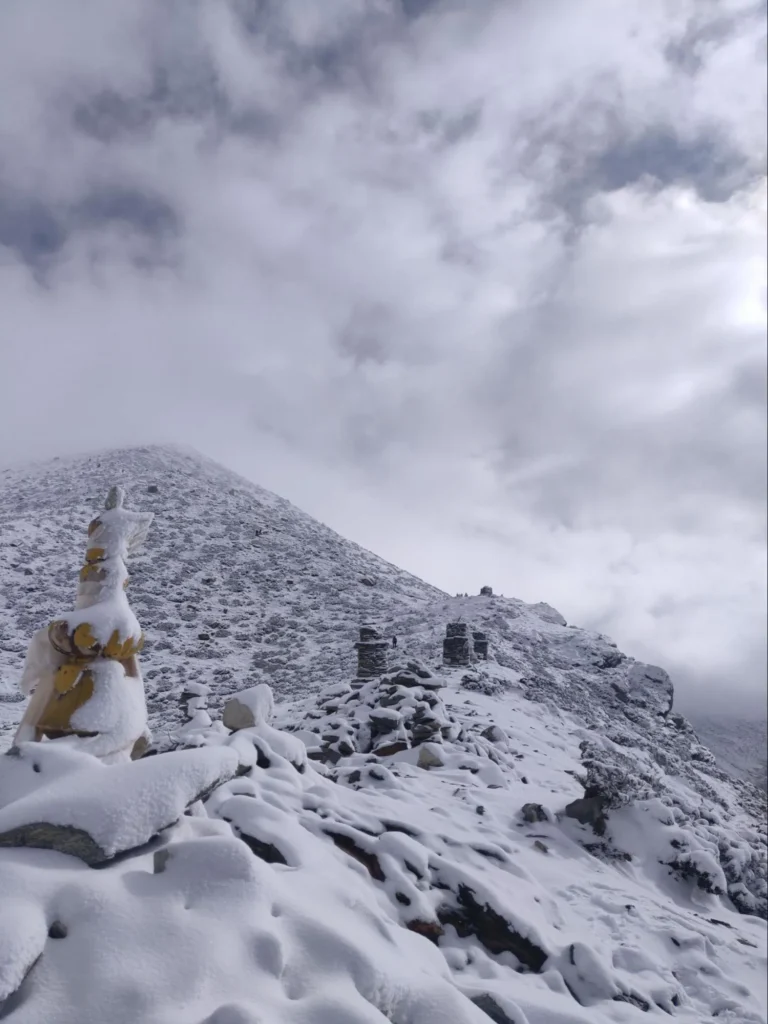
The trail descended down to the Lobuche East basecamp. Lobuche (4,940m) was a couple of kilometers ahead from here and we made it just before sunset. We had a very beautiful sunset as we were amongst the highest peaks on Earth. It was all white and golden and super quiet.
Lobuche is famous for altitude sickness. Most of the trekkers who did EBC have faced the AMS symptoms at that location. We had dinner after a short while and slept early because it was harshly cold to be outside the blanket. The next morning was a big day and I was wishing for everyone’s good health and safety.
Day 8: Lobuche to Gorakshep via EBC
The day was finally here. We were almost at 5000m and we had to reach 5364m ASL today. The trek was 3 hours long till Gorakshep. We planned to leave early today to spend the maximum time at the base camp. We departed from Lobuche at 7:30am. The trail was so beautiful that it cannot be put into words. We walked between the biggest mountains on Earth and they were illuminated by the rising sun. We reached a certain viewpoint just a couple of kilometers before Gorakshep from where we could see the Everest Base Camp in the distance. We realised that we were actually trekking next to the Khumbu Glacier.
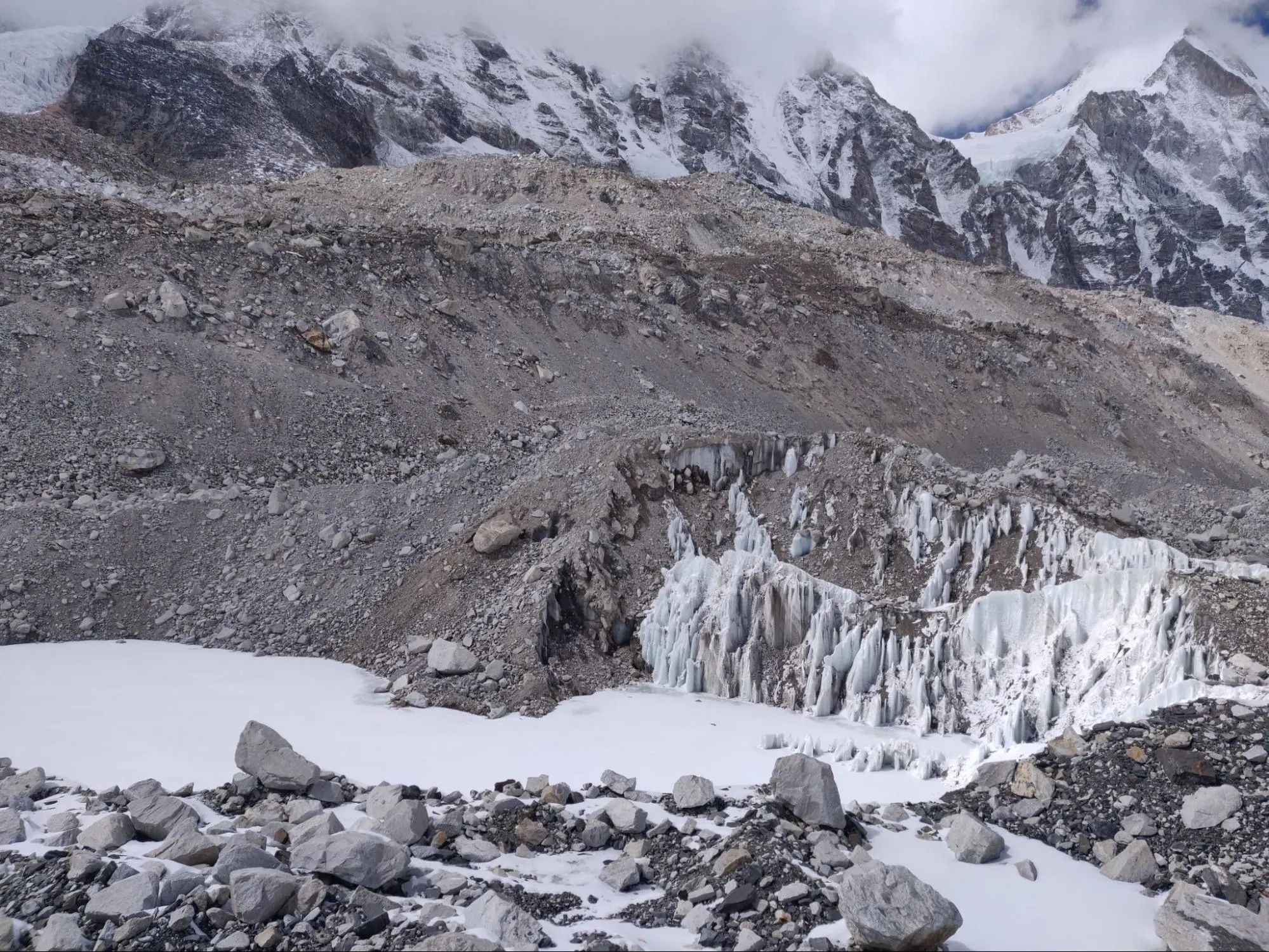
After getting the first sense of achievement, my pace automatically increased and within a few minutes, I was at Gorakshep. We kept our rucksacks and without having lunch, I continued for my goal. EBC is 2km ahead of Gorakshep. The trail is mostly flat and ascending at some points. I looked back at my team member who was catching his breadth by sitting on a rock. With every step, I was getting closer to my dream. We finally stepped on the last ridge which is parallel to the Khambu glacier and I could see the famous boulder of “ Everest Base Camp” right across me.

I felt like a child running towards his favourite toy. Stepping on the Khumbu glacier makes you realise your worth. You feel like an ant in front of those huge ice and snow formations. I was there with happy tears. I sat quietly on a rock a few meters away in front of the landscape. A tear rolled down my eye and I did not obstruct it. I did it. All my efforts and hardwork had given me the result after two years. I spent almost three hours at the rock absorbing the details and vibe of the place. The Khumbu icefall was the most beautiful and dangerous thing I ever saw in my life.
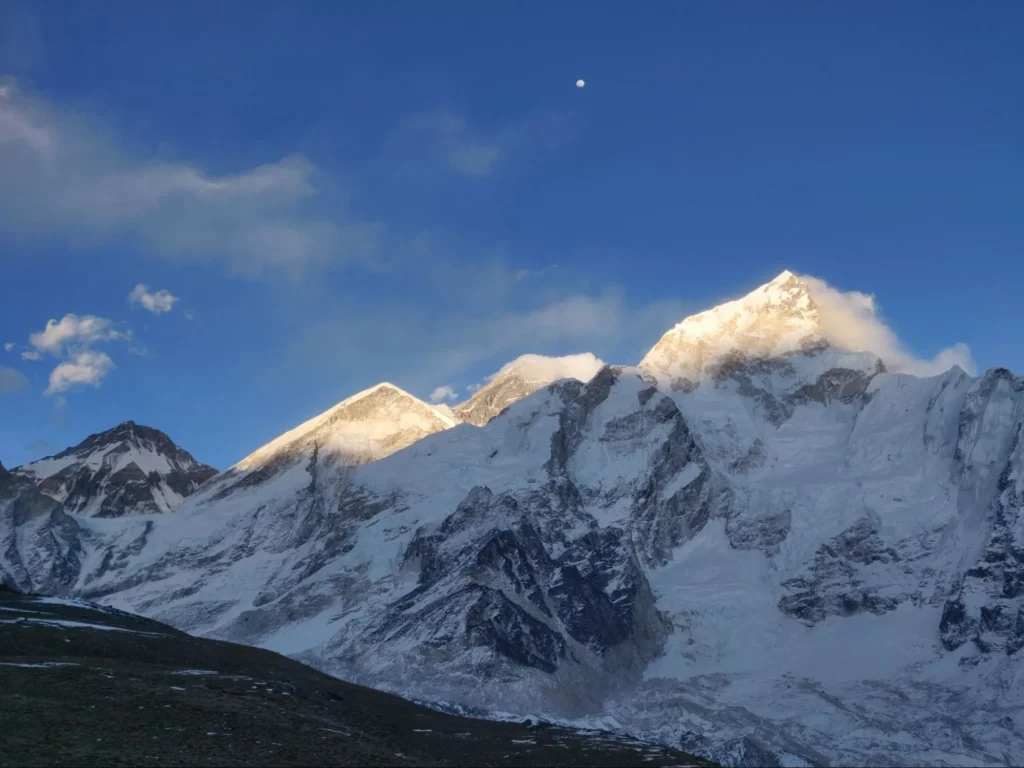
We came back to Gorakshep by 3pm and had lunch. Gorakshep is a small habitat and is mostly full because of its limited capacity and huge number of trekkers. Post lunch, the debate started regarding the climb to Kala Patthar(5644m). Most of the group members hesitated because they were too exhausted and their goal was completed. However, I knew that climbing Kala Patthar would offer the best possible view of Everest and the entire Khumbu valley. Most of the trekkers climb Kala Patthar the next day after returning to Gorakshep.

But I had read somewhere and talked to my guide that sunset was better than sunrise from Kala Patthar. Not thinking much, I grabbed my camera and started my climb. Within an hour, we reached midway of the climb but the sunset had already started. We just sat and kept our eyes on the view. We even got to witness an avalanche on Nuptse. It was truly the best sunset of life. As the sun was setting, the chilled air was hurting the skin. We descended back much more quickly and went into the blanket.
Day 9: Gorakshep to Pangboche
That night in Gorakshep was the coldest night of my life. We woke up and got ready somehow. There were snowflakes frozen on the windows. We had to descend back to Pheriche (4,371m). The distance was more than 18km. We started around 8am and reached Pheriche by evening.

Day 10: Pangboche to Namche Bazaar
The distance from Pangboche to Namche Bazaar was 13km and it took us 5 hours to reach Namche. We reached by lunchtime and then did some shopping. We, as a team, went to the Irish Pub to celebrate. The food was impressive and the drinks were very good.
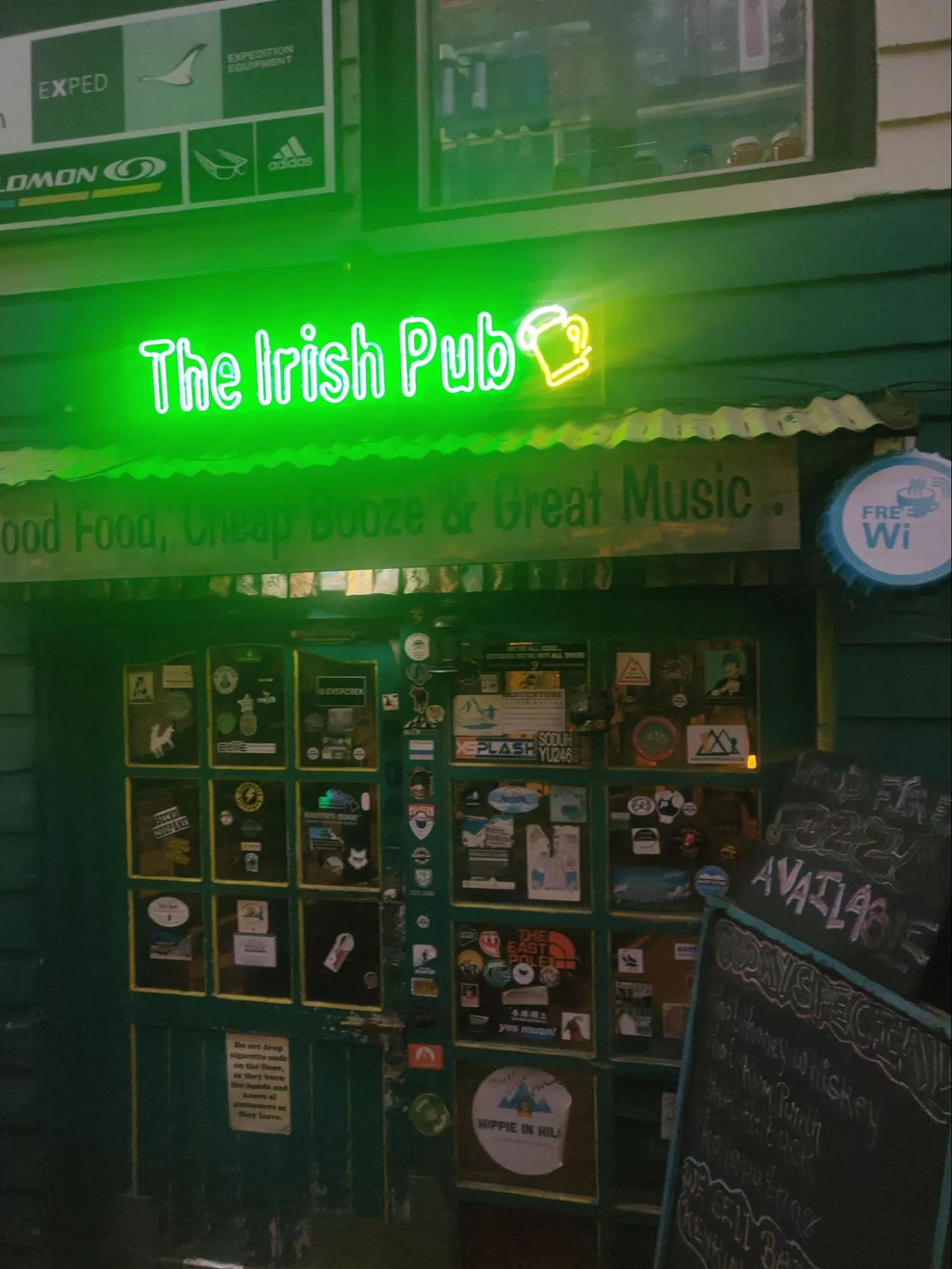
Day 11: Namche Bazaar to Lukla
This was the last and the longest day of our trek. The distance was 21km and it was a combination of ascents and descents. We started our trek at 8am and reached Lukla by 5pm. We had lunch at Phakding. We had a gorgeous stay in Lukla and had a late-night party with the Nepali locals. We paid our gratitude and respect to our sherpa and our guide.
Day 12: Lukla to Kathmandu via Ramechhap
There was too much crowd in the Kathmandu airport and as a result, the flights for Lukla had been diverted from Ramechhap airport. Thus we had to fly from Lukla to Ramechhap and then drive till Kathmandu. Kathmandu is 4 hours drive away and we reached late afternoon. We checked into our hotel and bid our goodbyes to the team members. We had our flight to Delhi the next day and we spent the entire day exploring the streets of Thamel and collecting souvenirs. The Everest Base Camp trek is once a lifetime experience and I am few of the lucky ones who has experienced it.
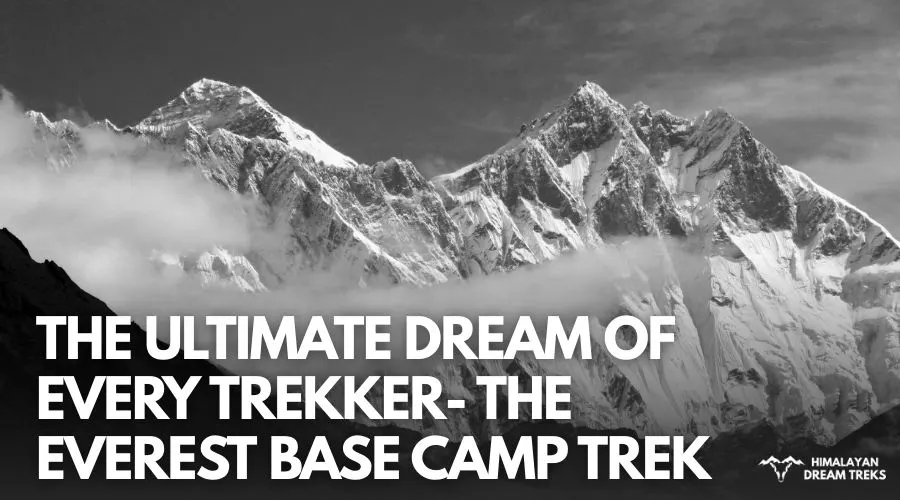
Leave a Comment